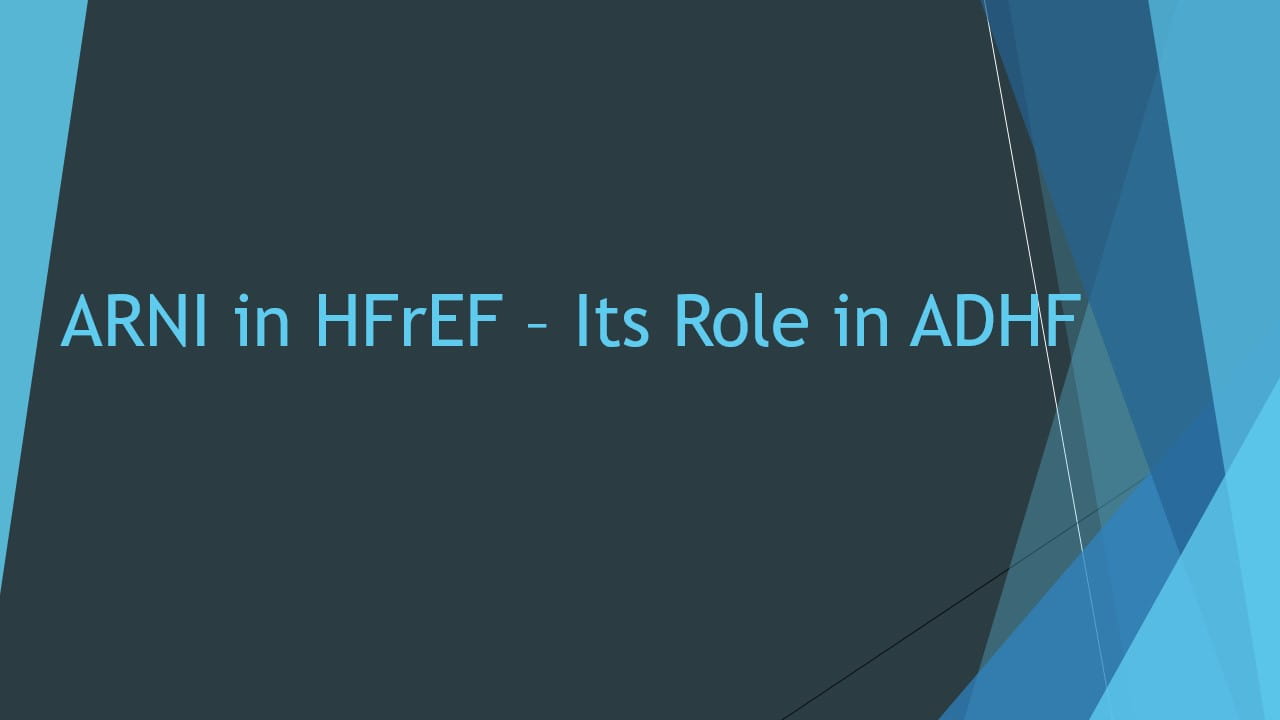ACC 2025: Late Breaking Clinical Trials IV
Liberal Fluid Intake Versus Fluid Restriction In Chronic Heart Failure
Speaker: Dr. Roland v. Van Kimmenade
Key Highlights
Introduction:
The management of acute decompensated heart failure often involves measures to relieve fluid overload, including the use of diuretics and fluid restriction in patients. As there is controversy over the usefulness of fluid restriction together with diuretics, the FRESH-UP study seeks to measure the impact of fluid limitation on patient outcomes in practice.
Methods:
-
FRESH-UP is an observational study which included patients diagnosed with heart failure more than 6 months prior to randomization and categorized into New York Heart Association (NYHA) class II/III. The following patients were excluded from the study:
-
Patients who had changes in heart failure medications prior to 14 days of trial
-
Patients who were hospitalized for heart failure 3 months prior to randomisation
-
Patients having any coronary or device intervention less than 3 months prior to randomisation.
-
Patients who had hyponatremia (sodium <130 mmol/L) and a eGFR of <30mL/min/1.73 m*2 at baseline.
-
A total of 504 patients were included in the study and they were divided into 2 groups:
-
254 patients were in the liberal fluid intake group (no restriction on fluid intake)
-
250 patients were in the fluid restriction group (restricted fluid intake of 1500mL per day)
-
The quality of life index was measured after 3 months using the Kansas City Cardiomyopathy Questionnaire (KCCQ). There were adjustments made in the baseline value using ANCOVA. Thirst distress was also assessed at 3 months using the Thirst Distress Scale.
Results:
The following results were observed across both the groups
|
Parameter |
Liberal Fluid Intake Group |
Fluid Restriction Group |
Difference / Outcome |
|
RAS Inhibition |
90% |
90% |
- |
|
Beta Blockade |
90% |
90% |
- |
|
MRA Therapy |
80% |
80% |
- |
|
SGLT2 Inhibitors Introduced |
Yes (HFpEF and HFrEF) |
Yes (HFpEF and HFrEF) |
- |
|
Loop Diuretics |
50% |
50% |
- |
|
Average GFR (ml/min/1.73 m²) |
~60 |
~60 |
- |
|
Anti-proBNP Levels |
Moderately Elevated |
Moderately Elevated |
- |
|
Baseline KCCQ Score |
73.4 |
74 |
- |
|
3-Month KCCQ Score |
74 |
72.2 |
Adjusted Mean Difference: 2.17 (p = 0.056) |
|
Thirst Distress Scale |
Lower |
Higher |
Reflective of Higher Thirst in Fluid Restriction Group |
|
Fluid Intake (ml/day) |
1764 |
1480 |
Difference: 284 ml (10 oz), p < 0.05 |
|
KCCQ Clinical Summary Score (Drug Trials) |
Higher |
Lower |
Significant Difference in Favour of Liberal Intake |
There were no changes seen in the following factors across both the groups: Safety Endpoints (Death, Hospitalization), Acute Kidney Injury, Anti-proBNP Change After 3 Months, VAD Changes After 3 Months, Loop Diuretic Increase/Decrease, Heart Failure Medication.
Conclusion:
The FRESH-UP study offers important insights into managing fluid balance in patients experiencing acute decompensated heart failure. The results indicate that standard fluid restriction might not be advantageous for every patient experiencing acute decompensated heart failure, highlighting the importance of personalized treatment strategies.
Ferric Carboxymaltose Assessment Of Morbidity And Mortality In Patients With Iron Deficiency And Chronic Heart Failure (FAIR-HF2) Trial
Speaker: Dr. Stefan D. Anker
Key Highlights
Introduction:
The study aimed to evaluate the impact of intravenous iron therapy on patients with heart failure and reduced ejection fraction who were iron deficient. The goal was to determine whether ferric carboxymaltose could reduce cardiovascular death and heart failure hospitalizations while also improving quality of life.
Methods:
-
It was a multi-center, double-blind, placebo-controlled trial which included 1,105 patients with the treatment doses adjusted over three years.
-
The patients were randomly assigned to 2 groups in a 1:1 ratio:
-
Group 1- Received ferric carboxymaltose
-
Group 2 - Placebo group
-
The primary outcomes that were measured included: Cardiovascular death or first heart failure hospitalization, Total heart failure hospitalizations, Effects in patients with a transferrin saturation below 20%.
Results:
-
The main outcome of cardiovascular mortality or initial heart failure hospitalization had a 21% reduction in events but was not statistically significant according to the adjusted cut-point.
-
There was a 29% reduction in events in the first 12 months.
-
The number of heart failure admissions was reduced by 20%, but not significantly.
-
There were no significant subgroup differences by ferritin, transferrin saturation, or hemoglobin.
-
Secondary endpoints validated the improvements in quality of life with intravenous iron therapy.
-
When all the six trials were meta-analyzed, it was found that there is a 19% reduction in heart failure hospitalization and cardiovascular death, which was statistically significant. When limited to the first 12 months, the reduction was 27%.
Conclusion:
In patients with heart failure and iron deficiency, intravenous iron therapy effectively showed to have reduced the risk of heart failure hospitalization and cardiovascular death, particularly in the first year of treatment. The therapy proved to be safe, enhancing the quality of life and showed consistent results across multiple trials. This depicts that iron has a positive role in managing heart failure patients who have iron deficiency.
ACC.25, March 29 - 31, 2025, Chicago




